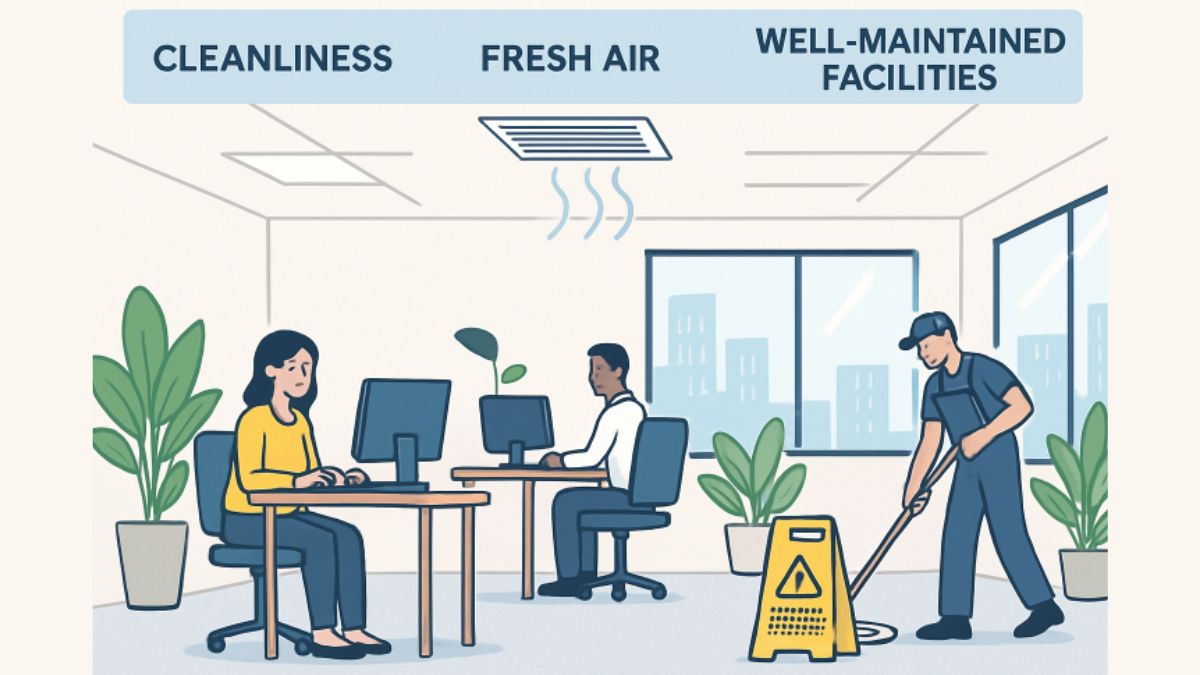TOPIC
How to Evaluate a JavaScript Developer’s Portfolio for Quality and Style

The moment you decide to hire JS programmers is when resumes alone often fall short. A well-crafted portfolio goes far beyond what someone claims on paper; it reveals how they genuinely think and execute. In today’s competitive hiring landscape, a GitHub repository filled with active projects and accessible live demos tells real, tangible stories about a candidate’s actual coding habits, their approach to problem-solving, and their creative capabilities. To successfully hire javascript developers, you require more than just a static snapshot of qualifications. You need to dive deep into real-world examples that genuinely reflect how they will contribute to your team’s development goals and culture. Therefore, a cursory glance at a portfolio isn’t enough; a thoughtful, in-depth examination is essential to evaluate both its quality and potential accurately.
Understanding the Purpose of a JavaScript Portfolio
A robust JavaScript portfolio should serve as a meticulously curated showcase of a developer’s finest work. It should demonstrate their proficiency across various JavaScript frameworks, libraries, and runtime environments, such as sites built with React, utility tools developed with Node.js, interactive dashboards created with Vue, or robust applications using TypeScript. More importantly, it transcends theoretical knowledge, serving as tangible proof of their ability to translate complex concepts into functional, responsive, and dynamic applications. You will be able to see whether they truly grasp core JavaScript concepts, such as asynchronous programming with promises and async/await effective DOM manipulation and seamless API integration. When evaluating JavaScript developers for hire, the aim is to find depth and real-world fluency, not merely a collection of visually appealing but shallow screen designs. This evidence of practical application is paramount.
Initial Screening: What to Look for at First Glance
Your first impression of a JavaScript portfolio can speak volumes, often determining whether a candidate warrants a more in-depth review. A polished and organized layout, coupled with clear, concise project descriptions, immediately conveys professionalism. Live demos and repository links must be easily accessible, indicating transparency and confidence in their work. A healthy GitHub profile with recent, consistent commits and well-structured README files for projects is a strong positive indicator of regular activity and commitment to maintainability. Look for diverse project types—whether they are front-end widgets, intricate backend APIs, or comprehensive full-stack applications—as this breadth illustrates a developer’s versatility and range of experience. A clean, thoughtful portfolio design often mirrors the developer’s overall attention to detail and pride in the work they present, providing a preliminary insight into their coding discipline.
Deep Dive into Project Quality: Code, Functionality, and UX
To accurately assess a JavaScript developer’s capabilities, a rigorous, in-depth examination of their actual projects is essential. This moves beyond surface-level aesthetics to scrutinize the underlying code and its practical application.
Code Quality and Maintainability
When examining code, look for clean, modular architecture that promotes scalability and ease of understanding. Consistent naming conventions, proper use of linting tools like ESLint or Prettier, and clear, structured commentation (where necessary, not overly verbose) are strong indicators of a professional approach. The effective use of modern JavaScript patterns, including ES6+ syntax and advanced asynchronous patterns, demonstrates up-to-date skills. Bonus points should be awarded for the inclusion of unit or integration tests, even for smaller projects, as this signifies a commitment to building robust and maintainable code. Reviewing a rich commit history can reveal how they iteratively solved problems and reflect disciplined development habits. These are all great signs when you need to hire JavaScript developers who can contribute to the project’s long-term health.
Functionality, Performance, and Error Handling
It is essential to test live demos thoroughly. Verify that all features work as expected and that the application responds smoothly to various inputs, including unexpected or invalid data. Can it handle bad input without crashing or displaying cryptic errors? Fast load times, fluid transitions, and smooth interactions indicate an understanding of performance optimization. Additionally, clear error messages and robust data validation demonstrate thoughtfulness in user experience and system stability. Actively testing the application’s boundaries helps reveal how resilient and mature the implementation is. These are key qualities to look for when hiring JavaScript programmers, as they reflect a developer’s ability to build reliable applications.
User Experience (UX) and Responsiveness
A powerful backend doesn’t fully shine if the user interface (UI) is cumbersome or unappealing. Critically evaluate the navigation flow, visual hierarchy, and overall polish of the user interface. Is it intuitive and user-friendly? It is essential to check for mobile-friendliness and responsive design, ensuring the application adapts seamlessly across various screen sizes and devices. Assess whether the developer considers accessibility features, such as providing proper ARIA labels for screen readers and implementing robust keyboard navigation. To find a javascript developer who truly excels, look for those who understand that great user experiences are as vital as well-written code. Full-stack awareness and commitment to the end user make a substantial difference in project success.

Assessing Style, Growth, and Contributions
Beyond individual project quality, it’s vital to understand the developer’s broader professional approach and potential. Here’s a comprehensive framework to understand the bigger picture about the candidate’s professional demeanor.
- Coding Style and Best Practices: Observe if their code is uniform and readable across projects. Do they consistently apply security practices—such as input sanitization, to prevent common vulnerabilities? Do they effectively utilize appropriate state management patterns (such as Redux or Vuex) within their frameworks? Or do they tend to fall into overly complex or “spaghetti” logic, making future maintenance difficult?
- Problem-Solving Approach: Can you discern their systematic approach to tackling complex problems? Do their projects address interesting and non-trivial challenges? Is their solution elegant, efficient, and well-documented, or does it appear overly complicated for the problem at hand? Examining the project’s README or any provided documentation can often shed light on the thought process behind it. This will help you how to hire a javascript developer who thinks critically.
- Growth and Learning: Look for clear evidence of professional progression. Can you see older projects evolving into more modern techniques or new projects demonstrating mastery of recently adopted technologies? A willingness to continually learn, adapt to new frameworks, and embrace emerging standards indicates a crucial growth mindset. This signifies that they are eager to become hire javascript experts in their field.
- Collaboration and Community Engagement: Contributions to open-source projects, active participation in coding communities (e.g., Stack Overflow, Discord channels, local meetups), or clear, descriptive Git commit messages all demonstrate a collaborative spirit and strong communication skills. This also suggests they are interested in continuous improvement and are ready to be a valuable team player. You might hire JavaScript contractor talent if they show a strong track record of independent yet collaborative work.
- Adaptability to New Technologies: Assess if their portfolio demonstrates a comfort level with integrating new tools or libraries. Developers who can quickly adapt to evolving tech stacks are highly valuable. When you hire javascript engineers, this adaptability is often a key differentiator.
- Attention to Detail and Testing: Beyond just having tests, examine the quality and coverage of tests. A developer who writes comprehensive tests shows attention to detail and a commitment to quality. You might consider hiring JS coders who specifically highlight their testing methodologies.
- Mentorship or Leadership Potential: If their portfolio includes examples of leading smaller projects, mentoring junior developers, or presenting at meetups, it can indicate leadership potential. This is particularly helpful when hiring JavaScript programmers for more senior roles.
Conclusion
Reviewing a JavaScript developer’s portfolio is far more than a simple checklist; it’s a profound exercise in uncovering real-world skills, a keen sense of user experience, and significant growth potential. By methodically focusing on critical elements such as code quality, robust functionality, polished user experience, and a discernible professional growth path, hiring managers can gain deep, actionable insights. This enables them to find candidates who are more than just coders; they are potentially valuable team members ready to drive real, lasting impact. When you aim to hire javascript developers, a meticulously evaluated portfolio significantly de-risks the hiring process, ultimately leading to stronger team integrations and more successful product development outcomes.
TOPIC
How to Plan Your Exit When Selling Your NZ Property

Selling your home is a significant milestone, and with it comes a mix of excitement and stress. Whether you’re moving within New Zealand or heading overseas, planning your exit strategically is key to a smooth transition. The property sale is only part of the equation; the logistics of your physical move—packing, timelines, legal matters, and emotional readiness—can often be overwhelming without proper planning.
This guide offers a structured approach to preparing for your move after selling your property, ensuring you meet legal obligations, protect your assets, and maintain peace of mind throughout the process.
Understand Your Legal and Contractual Timelines
When you’ve accepted an offer on your property, the first step is to revisit the sale and purchase agreement. This legally binding document outlines crucial dates, particularly the settlement date.
It’s essential to liaise closely with your conveyancer or solicitor to understand the implications of any conditions (such as finance, LIM reports, or building inspections) and ensure all legal paperwork is progressing as scheduled. Missing deadlines can result in financial penalties or legal complications, so clarity here is vital.
Create a Detailed Exit Timeline
From the moment your house goes under contract, time becomes your most valuable resource. Break down the remaining days or weeks into phases:
- Weeks 6–4 Before Settlement: Begin decluttering and donating unwanted items. Identify possessions that will require special handling.
- Weeks 4–2 Before Settlement: Book removal services, notify utility providers, and organise temporary accommodation if needed.
- Final 2 Weeks: Begin packing essentials and finalising address changes. Keep important documents and valuables separate from packed boxes.
A well-thought-out exit plan reduces last-minute chaos and helps you delegate responsibilities if you’re working with a moving company or third parties.
Consider Your Destination Early
Where you’re headed matters just as much as what you’re leaving behind. If relocating within New Zealand, research your new neighbourhood thoroughly. Check school zones, healthcare facilities, and transport options. If you’re moving abroad, additional layers such as customs regulations, visa requirements, and international shipping logistics must be accounted for early on.
In either case, working with professionals who specialise in your type of relocation can streamline the process, from handling large furniture to navigating international documentation.
Notify Utility and Service Providers
Ensure you disconnect or transfer all utilities and services ahead of time. This includes:
- Power and gas
- Water
- Broadband and telecommunications
- Subscription services (e.g., newspapers, cleaning services)
- Local council for rates and rubbish collection
Provide final meter readings and forwarding addresses where necessary. Not only does this prevent continued billing, but it also protects your credit record and avoids disputes with the new property owners.
Streamline Your Packing Process
Packing may seem straightforward, but it’s one of the most time-consuming tasks. Begin with infrequently used items and progress toward daily essentials as moving day approaches.
Label boxes clearly and consider creating an inventory for each room—especially helpful during an international move or long-term storage.
For fragile or high-value items, ensure you use proper packing materials and, where possible, take photographs before boxing them up. This aids insurance claims should anything go amiss.
Prepare for Settlement Day
On the day of settlement, the new owners will expect vacant possession unless otherwise agreed. Ensure:
- All furniture and personal items are removed
- The property is cleaned to an acceptable standard
- Keys, remotes, and manuals are ready for handover
- Any damage that occurred during moving is repaired
Keep a checklist handy to ensure nothing is overlooked, particularly if you’re coordinating the move from a distance.
Arrange Professional Help If Needed
Relocating isn’t simply about shifting belongings; it’s about ensuring your life transitions smoothly from one location to another. This is particularly true when moving across cities or countries, where logistical, regulatory, and emotional complexities multiply.
In such scenarios, it’s worth consulting with professional movers like Grace New Zealand relocation experts. These providers assist with coordinating logistics, navigating customs processes, and managing other practical aspects of a complex move.
From Sold Sign to New Beginnings
Planning your exit when selling your NZ property involves more than just packing boxes. With the right timelines, legal clarity, and support systems in place, your move can be as seamless as your sale. Whether you’re relocating down the street or across the globe, structured preparation will help ensure a confident, stress-free transition into your new life.
TOPIC
How Routine Maintenance Contributes to a Healthier Workplace Environment

Introduction
In today’s business landscape, workplace health and productivity are directly influenced by how well an office is maintained. Routine maintenance sets the foundation for a thriving work environment, from reducing daily wear and tear to ensuring that every corner remains spotless. When businesses invest in commercial cleaning services, they actively invest in their employees’ health and well-being.
The connection between a clean, functional office and overall employee performance is often stronger than many realize. Dirt, dust, and poorly maintained equipment can contribute to an environment where germs spread rapidly and air quality is compromised. By keeping facilities in optimal condition, business owners ensure every member of their staff benefits from improved air, a sense of security, and higher morale.
Consistent upkeep demonstrates an employer’s commitment to creating a safe, appealing, and practical workspace. Employees who witness a proactive approach to maintenance feel more valued, which drives engagement and performance. Not only does this foster a positive company culture, but it also reduces costs related to healthcare claims and absenteeism.
For companies looking for expert support, working with professional commercial office cleaners ensures high standards are met and sustained over time, offering peace of mind for staff and management alike.
Enhancing Air Quality Through HVAC Maintenance
Indoor air quality is one of the most critical—yet often overlooked—aspects of workplace maintenance. Regular HVAC maintenance helps remove dust, pollen, and allergens, creating a fresher indoor atmosphere. According to the Environmental Protection Agency, indoor air can be two to five times more polluted than outdoor air, posing potential health risks for employees who spend most of their day inside offices.
Scheduled filter replacements, coil cleanings, and proper ventilation keep pollutants and contaminants at bay. When air conditioning systems are functioning efficiently, they also regulate humidity, reducing the likelihood of mold growth, which can trigger allergic reactions or respiratory conditions. Clean air results in fewer sick days, sharper concentration, and a noticeable boost in workplace energy.
Reducing Illness Through Regular Cleaning
Another crucial layer of workplace maintenance is routine cleaning to keep germs and bacteria under control. High-touch surfaces such as doorknobs, elevator buttons, and breakroom counters can harbor viruses and bacteria that spread illness quickly. Frequent and thorough cleaning of these areas prevents the transmission of seasonal colds, flu, and other contagious diseases, contributing to overall office health.
By implementing a regular cleaning schedule, businesses drastically reduce the potential for outbreaks. This directly impacts productivity, as fewer employees fall ill and require time off. Clean work environments also limit allergens, such as dust mites and mold spores, improving comfort for allergy sufferers and minimizing distracting symptoms like sneezing or headaches.
Boosting Employee Morale with Well-Maintained Facilities
The state of an office impacts more than just physical health; it profoundly influences employee attitude and job satisfaction. A clean, organized environment free from clutter and hazards naturally reduces stress levels and creates a welcoming atmosphere. Employees tend to appreciate and reciprocate care displayed in their surroundings, fostering pride and engagement.
Employers investing in ongoing maintenance signal staff that their well-being is a top priority. This sense of value translates into stronger loyalty, higher morale, and increased employee retention. People are likely to perform at their best when working in a safe and appealing setting.
Preventing Workplace Accidents
Routine maintenance is also essential for keeping employees safe. Unchecked hazards such as exposed wires, loose floor tiles, or faulty lighting can result in workplace accidents, injuries, and even costly legal claims. By addressing these issues promptly, businesses safeguard employees from harm and avoid disruptions to daily operations.
Well-maintained facilities mean employees can focus entirely on their tasks without concerns about potential risks. This level of attention to safety further reinforces employer commitment to the workforce and underpins a culture of responsibility throughout the organization.
Implementing Effective Maintenance Strategies
Develop a Maintenance Schedule
Creating and following a maintenance calendar ensures key tasks are never overlooked. From daily cleaning routines to monthly HVAC inspections, systematic scheduling helps keep facilities in peak condition.
Engage Professional Services
Partnering with skilled professionals for specialized cleaning and repairs brings a higher standard of service. These experts address current issues and recommend preventative measures for long-term wellness.
Encourage Employee Participation
Inspiring staff to keep their personal work areas tidy and promptly report maintenance concerns builds a culture of shared responsibility for the workspace.
Monitor and Evaluate
Continuously assessing maintenance protocols and soliciting employee feedback allows for improvements and adaptations based on evolving office needs.
Conclusion
Investing in routine maintenance is more than a logistical concern; it’s a strategic move for cultivating a healthier, more productive, and happier workplace. From elevated air quality and reduced illness to improved morale and safety, proactive care for office environments pays dividends in the form of robust business performance and employee satisfaction.
TOPIC
HOA Management Best Practices for Modern Communities

Homeowners Associations (HOAs) are at the forefront of shaping modern residential communities. Effective management has become increasingly complex, requiring a seamless blend of robust governance, innovative technology, and community-first thinking. In today’s climate, adopting best practices not only maintains property values but also elevates residents’ overall quality of life. One important resource for navigating these responsibilities is HOA Management Meredith, which offers expertise designed to streamline HOA operations and improve community outcomes.
Modern HOA boards must align with resident expectations for transparency, accessibility, and sustainability. The trend towards digital and community-driven management indicates changing homeowner priorities. Adopting these practices fosters trust and engagement, reduces administrative burdens, ensures regulatory compliance, and enhances value for residents.
Embracing Digital Tools
HOA management is increasingly defined by the strategic integration of technology. Digital platforms, including secure online portals and mobile apps, allow residents to make payments, access documents, and submit maintenance requests at their convenience. For HOA boards, these tools simplify communications, help automate repetitive administrative tasks, and offer comprehensive budgeting and reporting functionalities, driving operational efficiency and reducing human error. The digital transformation of HOA operations has become a standard expectation, especially among tech-oriented homeowners.
Prioritizing Sustainability
With eco-conscious living rising to the forefront of community values, HOAs are prioritizing sustainable upgrades as both a duty and a competitive advantage. Modern best practices involve adopting energy-efficient lighting, implementing smart irrigation, and installing solar solutions across shared amenities. These initiatives reduce utility costs, attract environmentally-minded residents, and help comply with tightening environmental regulations. In addition, sustainable landscaping practices and green building standards are also embraced to meet evolving expectations, supporting both long-term cost savings and property value appreciation.
Enhancing Communication and Transparency
Transparent and effective communication is essential for strong, vibrant communities. HOAs now employ omnichannel strategies that combine SMS texts, scheduled email campaigns, and app notifications to keep residents informed. Detailed board portals and digital repositories for meeting minutes, rules, and policies make governance more transparent and trust-focused. Clear communication reduces misunderstandings, encourages resident participation, and keeps the community aligned on key initiatives. For further insight, CINC Systems outlines how improved communication channels have helped foster more positive and engaged associations.
Leveraging Artificial Intelligence
The adoption of artificial intelligence (AI) has started to revolutionize HOA management. AI-powered tools automate routine communication with residents, expedite tenant screening with increased accuracy, and use predictive analytics to manage maintenance tasks before issues escalate. These systems can flag potential problems, suggest cost-saving solutions, and even provide instant answers to resident inquiries via chatbots. By handling administrative and operational processes efficiently, AI allows boards to focus on strategic community improvements, raising the bar for resident satisfaction and board performance.
Fostering Community Engagement
Engagement is a cornerstone of HOA success, directly influencing community satisfaction and retention. Forward-thinking associations host regular neighborhood events, workshops, and service opportunities that encourage residents to connect outside their homes. Social media groups and dedicated community apps foster ongoing dialogue, enabling real-time feedback, event coordination, and volunteer sign-ups. Boards that actively solicit resident input and involvement not only lighten their workload but also increase buy-in and satisfaction throughout the neighborhood.
Adapting to Changing Demographics
HOAs are increasingly mindful of demographic changes, including a rise in millennial and Gen Z homeowners. These residents prefer digital-first interactions, flexible payment solutions, and amenities that support remote work or wellness-focused lifestyles. Delivering value now means adapting amenities, rules, and programs to welcome a broader array of backgrounds and interests. Prioritizing inclusivity, diversity, and representation ensures that community policies remain relevant and that residents feel heard and respected, no matter their background or stage of life.
Staying Informed on Legal and Regulatory Changes
The legal environment governing HOAs is constantly shifting. Management teams and boards must keep up with new federal, state, and local legislation affecting association governance, property management, and owner rights. Regular training, consultations with HOA attorneys, and subscriptions to industry newsletters can help ensure compliance and mitigate risk. Being proactive on these fronts protects the association from costly legal disputes and reinforces the board’s competence and responsibility to residents.
Conclusion
Pursuing best practices in HOA management positions communities for success. Embracing digital solutions, prioritizing sustainability, enhancing communication, leveraging AI, nurturing resident engagement, adapting to evolving demographics, and addressing legal obligations create strong, vibrant, and resilient neighborhoods. By staying proactive and responsive, today’s HOAs can deliver exceptional value for every resident, sustaining property values and ensuring a harmonious community environment for years to come.
-

 TOPIC12 months ago
TOPIC12 months ago7 Expert Tips For Choosing The Best Basement Renovation Companies
-

 TOPIC4 months ago
TOPIC4 months agoWhy Greece Katz Martian Has Everyone Talking in 2025
-

 BUSINESS5 months ago
BUSINESS5 months agoTop 5 Features of Sowix Online That Every User Should Know About
-

 TOPIC5 months ago
TOPIC5 months agoTop Features of BetterThisWorld .com You Need to Know About
-

 FINANCE8 months ago
FINANCE8 months agoHow TraceLoans Can Simplify Your Finances
-

 BIOGRAPHY8 months ago
BIOGRAPHY8 months agoFrom Reality Star to Business Mogul: Prince Narula Digital PayPal
-

 EDUCATION5 months ago
EDUCATION5 months agoThe Evolution of Pi123: How It Became a Must-Have Tool
-

 TOPIC5 months ago
TOPIC5 months agoSabsastaa.com: Your Ultimate Guide to Budget Shopping and Savings
